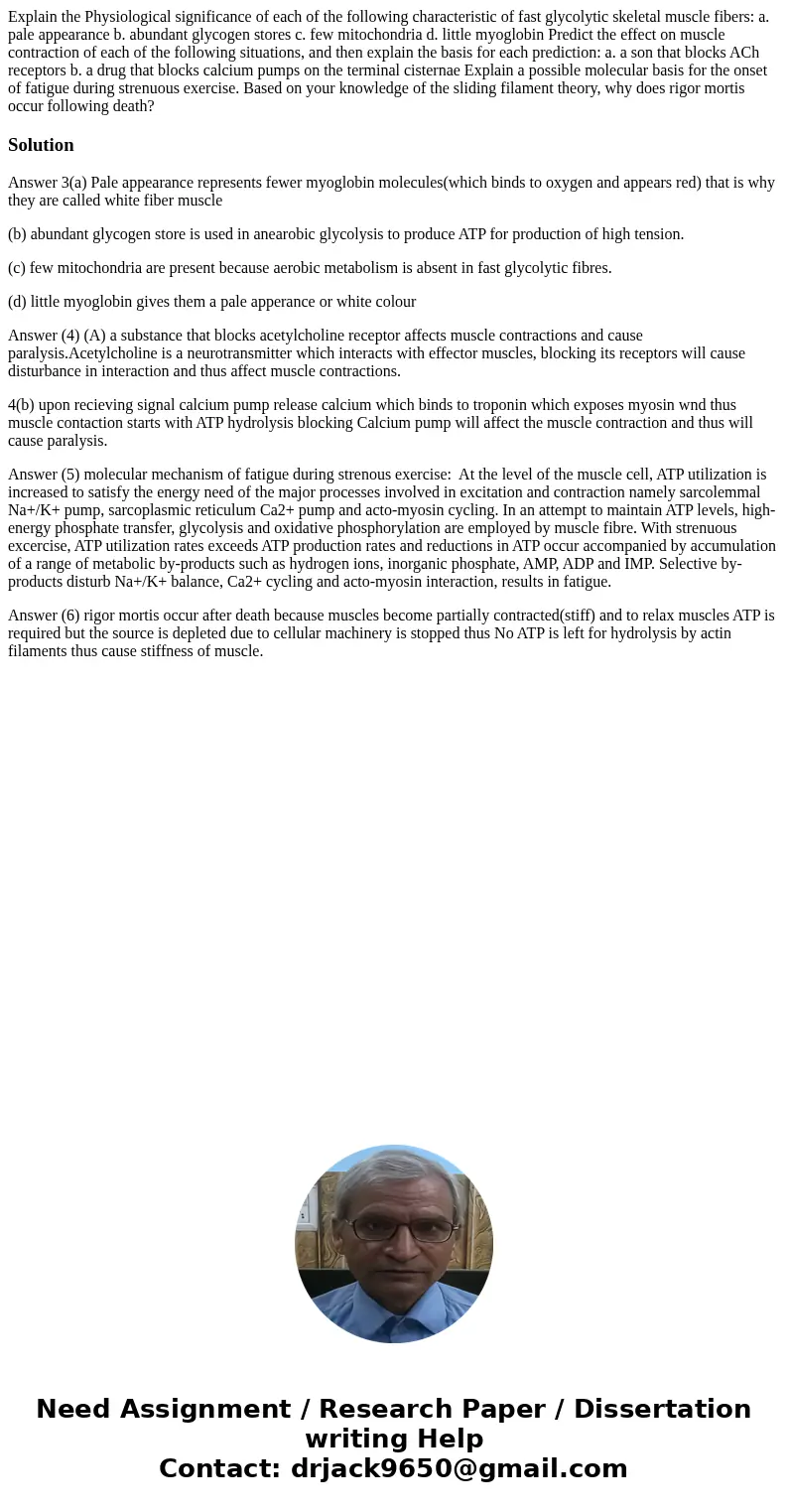Explain the Physiological significance of each of the follow
Solution
Answer 3(a) Pale appearance represents fewer myoglobin molecules(which binds to oxygen and appears red) that is why they are called white fiber muscle
(b) abundant glycogen store is used in anearobic glycolysis to produce ATP for production of high tension.
(c) few mitochondria are present because aerobic metabolism is absent in fast glycolytic fibres.
(d) little myoglobin gives them a pale apperance or white colour
Answer (4) (A) a substance that blocks acetylcholine receptor affects muscle contractions and cause paralysis.Acetylcholine is a neurotransmitter which interacts with effector muscles, blocking its receptors will cause disturbance in interaction and thus affect muscle contractions.
4(b) upon recieving signal calcium pump release calcium which binds to troponin which exposes myosin wnd thus muscle contaction starts with ATP hydrolysis blocking Calcium pump will affect the muscle contraction and thus will cause paralysis.
Answer (5) molecular mechanism of fatigue during strenous exercise: At the level of the muscle cell, ATP utilization is increased to satisfy the energy need of the major processes involved in excitation and contraction namely sarcolemmal Na+/K+ pump, sarcoplasmic reticulum Ca2+ pump and acto-myosin cycling. In an attempt to maintain ATP levels, high-energy phosphate transfer, glycolysis and oxidative phosphorylation are employed by muscle fibre. With strenuous excercise, ATP utilization rates exceeds ATP production rates and reductions in ATP occur accompanied by accumulation of a range of metabolic by-products such as hydrogen ions, inorganic phosphate, AMP, ADP and IMP. Selective by-products disturb Na+/K+ balance, Ca2+ cycling and acto-myosin interaction, results in fatigue.
Answer (6) rigor mortis occur after death because muscles become partially contracted(stiff) and to relax muscles ATP is required but the source is depleted due to cellular machinery is stopped thus No ATP is left for hydrolysis by actin filaments thus cause stiffness of muscle.

 Homework Sourse
Homework Sourse